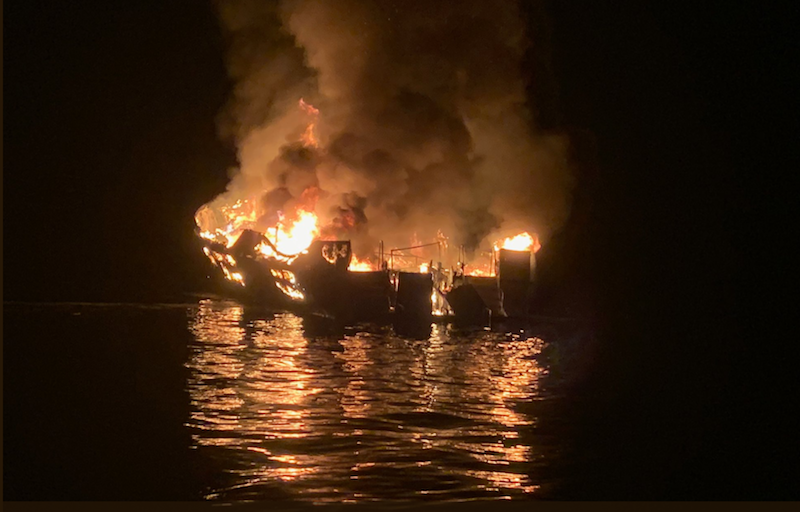There are so many questions surrounding the Labor Day vessel fire that led to the sinking of the dive boat Conception near California's Santa Cruz Island: How did the fire start? Why did it spread so quickly and catastrophically? Why wasn’t even a single passenger able to get out of the large, shared bunk room? Why didn’t onboard fire suppression system at least give the crew time to fight the fire? Was there propane on board? Did diving tanks explode and contribute to the conflagration?
I finally found the answer to one of my questions. What material was the Conception built from? Turns out it was wood under fiberglass, according to The Mercury News. I presume it was plywood. Had the structure been steel or aluminum, at least the hull and decks wouldn’t have burned as they obviously did.
But the 38-year-old dive excursion boat had passed all Coast Guard inspections and met all current standards for maintenance and upkeep, according to all reports. The company has a great reputation. Make that “had.”
We may have questions now, but we will get answers. As we all know, this awful accident will generate immediate investigations, primarily by the Coast Guard and the National Transportation Safety Board, both of whom have teams already assigned. And it’s not at all unlikely that new regulations will be developed in response.
Whatever happened, it was a nightmare, one that gripped the nation’s attention, even as a Category 5 hurricane pulverized the Bahamas. The threat of fires at sea rate right at the top of maritime operation priorities, and the industry takes that risk very seriously. From live firefighting training to automatic fire suppression systems, professional mariners are not casual about any of this.
Still, things went disastrously wrong in the Channel Islands, and we need to know what they were. Equipment malfunctions? Operator errors? Thirty-four people died horrible deaths in the middle of a calm night. Why?




